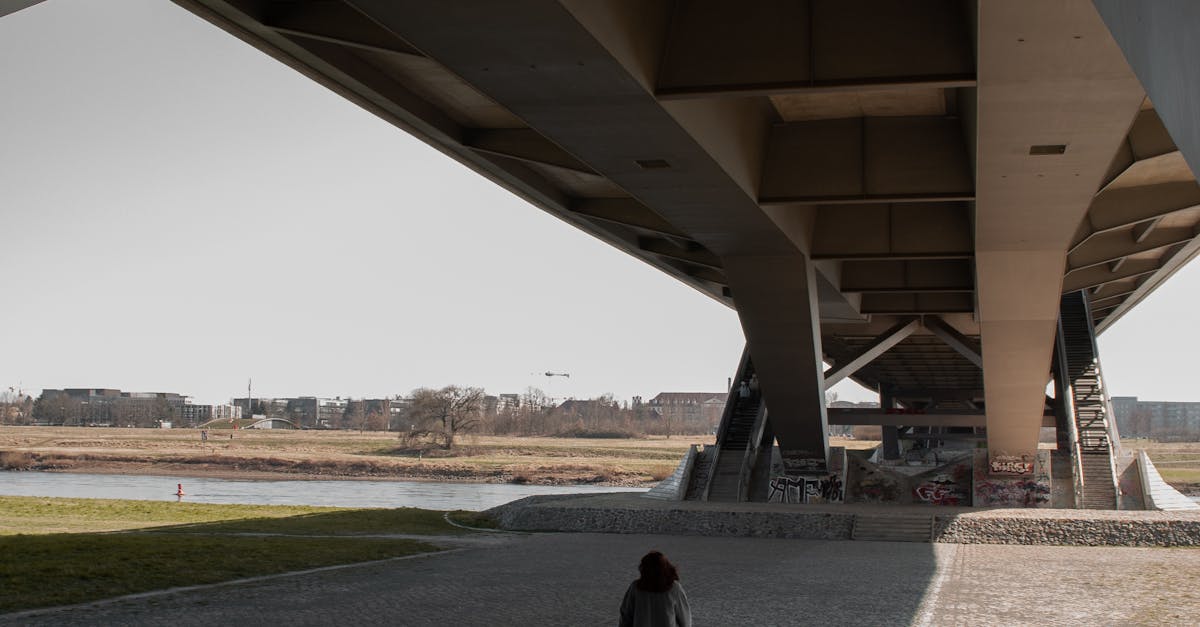
7 Essential Tips for Maintaining Optimal Chiller Performance
Inspect Electrical Components
Regular inspection of electrical components is essential for ensuring reliable chiller operation. Start by checking the power supply connections, looking for signs of wear or corrosion. Loose or damaged wiring can lead to overheating issues and system failures. It's also prudent to examine circuit breakers and fuses for any faults, as these elements play a critical role in protecting the overall system.
In addition to visual inspections, utilising diagnostic tools can help identify underlying electrical problems. Multimeters and thermal cameras are useful for assessing voltage levels and detecting hotspots. Regular testing of these components can prevent unexpected breakdowns, ultimately extending the lifespan of the chiller. Maintaining clean and properly connected electrical parts enhances efficiency and minimises energy consumption.
Identifying Common Electrical Issues
Electrical issues can significantly impact the performance of chillers. Common problems include loose connections, which may lead to intermittent power supply. Over time, wiring can deteriorate, resulting in potential shorts or overloads. Regular inspection of components like relays, contactors, and circuit boards can help identify these vulnerabilities before they escalate into more severe failures.
Another frequent issue involves faulty sensors, which can disrupt the system's ability to maintain optimal temperatures. Inaccurate temperature readings or malfunctioning pressure switches can cause inefficient operations, leading to increased energy consumption. Addressing these problems promptly ensures that the chiller system operates smoothly and effectively, reducing downtime and maintenance costs.
Schedule Professional Servicing
Regular professional servicing plays a crucial role in keeping chillers operating efficiently. Trained technicians can identify potential issues that may not be evident during routine checks. They have the expertise to perform thorough inspections and maintenance tasks, ensuring that chillers remain in optimal condition. Scheduling these services at least once a year can help prevent costly repairs and prolong the lifespan of the unit.
Understanding when to call in experts is equally important. Signs such as unusual noises, fluctuating temperatures, or increased energy bills may indicate underlying problems. Promptly addressing these issues with the help of qualified professionals can mitigate further complications. Comprehensive servicing not only enhances the reliability of the chiller but also ensures compliance with safety and environmental regulations.
When to Call in Experts
Recognising the right time to enlist professional help can significantly impact the longevity and efficiency of your chiller system. If any unusual noises or vibrations occur during operation, it might indicate a deeper issue that requires expert diagnosis. Additionally, irregular temperature fluctuations or insufficient cooling performance are signs that warrant immediate attention from qualified technicians.
Routine maintenance can often be handled in-house, yet some problems necessitate specialised knowledge and equipment. If you're facing persistent issues that standard troubleshooting can't resolve, seeking expert assistance is advisable. Regular checks and prompt intervention from professionals can prevent minor hiccups from escalating into major malfunctions, ultimately saving time and costs in the long run.
Utilise Advanced Monitoring Systems
The integration of advanced monitoring systems can significantly enhance the efficiency of chillers. These systems provide real-time data on various parameters such as temperature, pressure, and energy consumption. By continuously tracking this information, operators can identify anomalies and address potential issues before they escalate. This proactive approach not only helps in maintaining optimal performance but also extends the lifespan of the equipment.
Modern technology offers robust solutions that facilitate remote monitoring. Operators can access detailed analytics from anywhere, allowing them to make informed decisions quickly. Alerts and notifications about system irregularities mean that necessary adjustments can happen promptly, reducing the risk of downtime. Implementing these advanced monitoring systems is an investment that pays off by minimising operational disruptions and ensuring consistent chiller functionality.
Advantages of Modern Technology
Advanced monitoring systems have transformed the way chiller performance is assessed and maintained. These technologies provide real-time data on various parameters such as temperature, pressure, and energy consumption. By continuously tracking this information, potential issues can be identified before they escalate into significant problems. Immediate insights offered by these systems enable users to make informed decisions regarding operational adjustments and maintenance needs.
Moreover, modern technology facilitates remote access and control over chiller systems. Operators can monitor performance from virtually anywhere, reducing the need for on-site inspections. This capability allows for quicker responses to alerts and anomalies. Enhanced connectivity also means that data can be easily shared with service providers, leading to more efficient troubleshooting and repair processes.
FAQS
What are the signs that my chiller needs professional servicing?
Common signs that your chiller may require professional servicing include unusual noises, fluctuating temperatures, increased energy consumption, and leaks around the unit. If you notice any of these issues, it’s best to call in an expert.
How often should I inspect the electrical components of my chiller?
It is recommended to inspect the electrical components of your chiller at least once every six months. Regular inspections can help identify potential issues early, ensuring optimal performance and preventing costly repairs.
What are the advantages of using advanced monitoring systems for chillers?
Advanced monitoring systems provide real-time data on the performance of your chiller, enabling you to detect issues before they become serious. They can also optimise energy usage, reduce downtime, and improve overall efficiency.
Can I perform maintenance on my chiller myself?
While some basic maintenance tasks, such as cleaning filters and checking for leaks, can be done by yourself, it is advisable to have a professional perform more complex servicing to ensure safety and compliance with regulations.
What types of electrical issues should I look out for in my chiller?
Common electrical issues to monitor include loose connections, damaged wiring, tripped circuit breakers, and burnt-out fuses. Identifying these problems early can prevent further damage to your chiller system.
Related Links
Review of Top Troubleshooting Tools for Industrial Air Cooled ChillersHistorical Developments in Chiller Troubleshooting Techniques
Roundup of Common Problems Faced by Chillers and Their Solutions
Why Your Chiller Performance May Deteriorate Without Maintenance
Why Regular Troubleshooting Is Crucial for Chiller Longevity